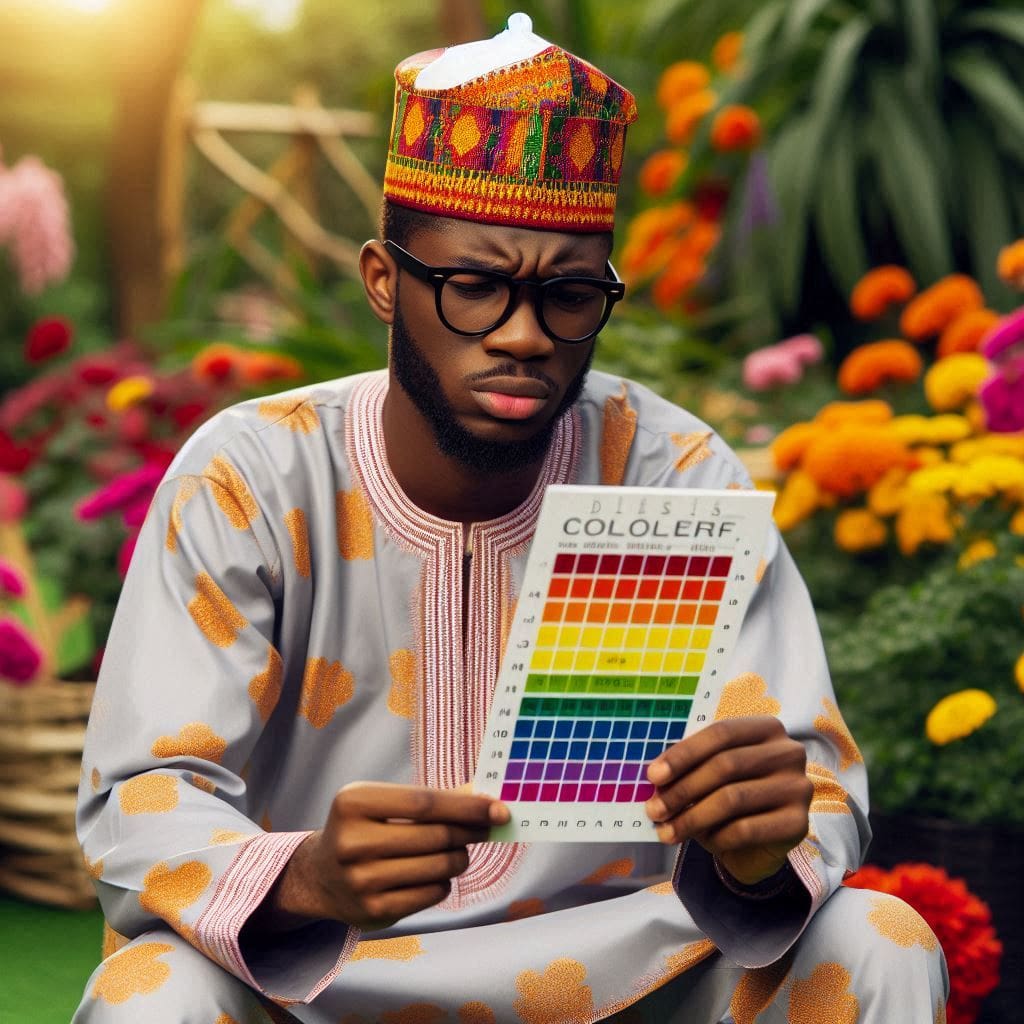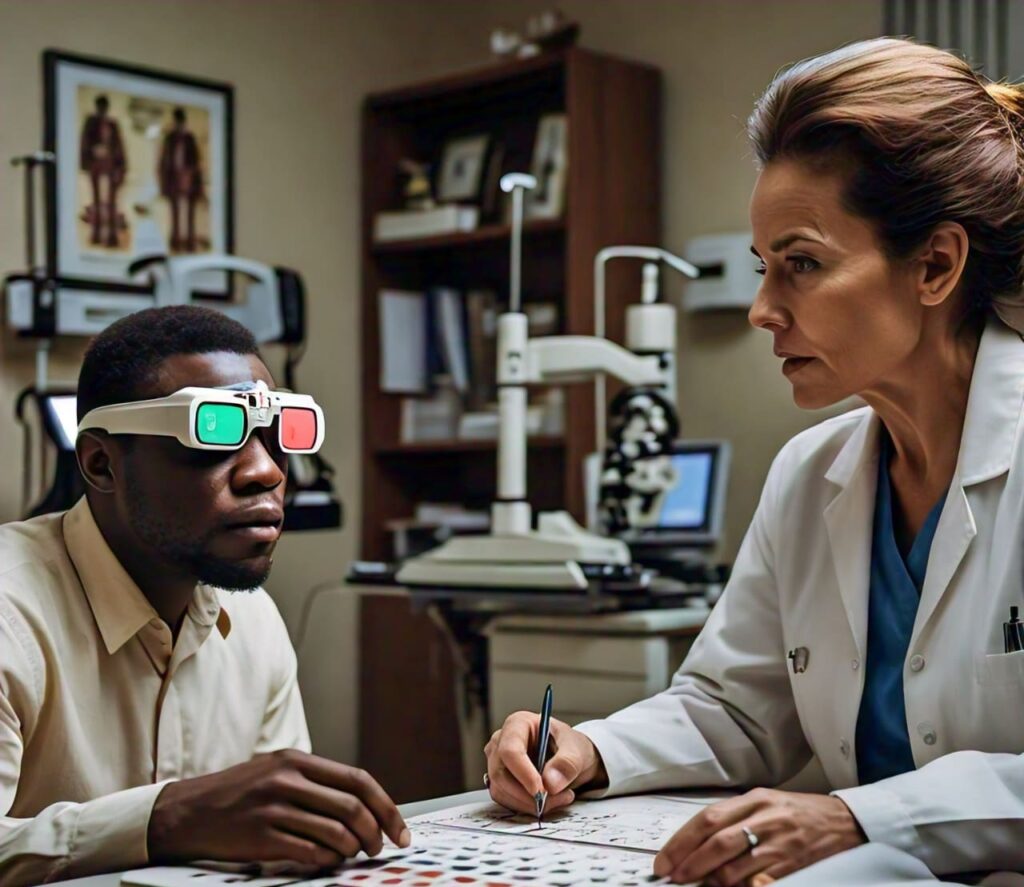
Imagine reaching for a “red” apple, only to find out you grabbed a green one—or mixing up a green traffic light with a yellow one! That’s what life can be like for people with color blindness. It’s not that they see in black and white, but colors look different to them, often blending or mixing in ways that others wouldn’t expect.
Color blindness usually affects how people see reds, greens, or blues, making it tricky to tell some shades apart. It’s often something you’re born with, but some people develop it later in life. While it can make things like matching clothes or reading color-coded charts a bit challenging, people with color blindness learn clever ways to navigate their world.
So, what causes it, how does it actually feel, and are there ways to manage it? Let’s break down everything you need to know about color blindness, from why it happens to tips for making life easier and brighter, even if colors don’t look quite the same!
What is Color Blindness?
Color blindness, also known as color vision deficiency, is when a person has difficulty seeing certain colors or cannot see colors at all. This happens because the eyes can’t detect one or more of the primary colors: red, green, or blue.
Types of Color Blindness: A Closer Look
Red-Green Color Blindness:
- This is the most common type of color vision dificiency.
- People with this condition have trouble seeing the difference between red and green colors.
- It’s like trying to tell the difference between a red apple and a green apple in dim light.
- Some people may see red as gray or brown, while others may see green as gray or yellow.
Blue-Yellow Color Blindness:
- This is less common than red-green color blindness.
- People with this condition have difficulty distinguishing between blue and yellow colors.
- It’s like trying to tell the difference between a blue sky and a yellow flower.
- Some people may see blue as gray or purple, while others may see yellow as gray or white.
Total Color Blindness:
- This is the rarest type of color vision deficiency.
- People with total color blindness can only see shades of gray.
- It’s like living in a black and white world.
- They have no color vision at all.
Is Color Blindness Limited to Adults?
No, color vision deficiency is not just for adults. It can affect people of any age, including children. Color blindness in children is usually something they are born with, passed down from their parents.
Parents or teachers might notice it when a child has trouble with tasks that involve colors, like identifying colors in school or picking out matching clothes. It’s important to spot color vision deficiency early so that children can get the help they need at school and home.
While it often starts at birth and stays for life, some causes, like eye diseases or medication side effects, may happen later, which is why adults might develop color vision deficiency as they get older
Causes of Color Blindness
- Genetics: The most common cause of color blindness is inherited from parents. It happens when the genes responsible for making color-detecting cells in the eyes (called cones) don’t work properly.
- Eye Diseases: Some eye conditions like glaucoma, cataracts, and macular degeneration can lead to color vision deficiency.
- Aging: As people get older, their ability to see colors can decrease.
- Medications: Some drugs used to treat certain conditions can affect color vision as a side effect.
- Chemical Exposure: Exposure to certain chemicals, especially in industries, can cause color vision problems.
Additional Causes of Color Blindness
- Eye Injuries: Accidents or injuries that damage the eye, especially the retina, can lead to color vision deficiency.
- Diabetes: This condition can cause damage to the blood vessels in the eyes, affecting color vision over time.
- Multiple Sclerosis (MS): MS is a condition that affects the central nervous system, and it can lead to changes in vision, including color blindness.
- Stroke: A stroke can damage parts of the brain that process color information, leading to color vision problems.
- Vitamin A Deficiency: A lack of vitamin A, which is important for good vision, can also contribute to color vision deficiency.
Symptoms of Color Blindness
- Difficulty Seeing Colors: People with color vision deficiency often have trouble distinguishing between certain colors, like red and green or blue and yellow.
- Inability to See Shades: They may not be able to see different shades of the same color.
- Frequent Mistakes: Individuals might confuse colors in everyday activities, like picking ripe fruits or choosing matching clothes.
Effects of Color Blindness
- Daily Challenges: Color blindness can make daily tasks like driving, cooking, and shopping more difficult.
- Educational Impact: Children with color vision deficiency may struggle with school activities that involve color recognition.
- Career Limitations: Some professions, like pilots or electricians, require perfect color vision, limiting job options for those with color blindness.
Additional Negative Effects of Color Blindness
- Safety Risks: People with color blindness may have trouble recognizing traffic lights or warning signs, which can increase the risk of accidents, especially when driving or crossing the road.
- Social Challenges: It can make it hard to choose clothing that matches or to enjoy activities like art and design. This can lead to feelings of frustration or embarrassment in social situations.
- Difficulty in Hobbies: Some hobbies, like gardening, cooking, or playing certain video games, require good color vision. Color-blind individuals might struggle with these activities, which can reduce enjoyment.
- Problems with Labeling: Reading color-coded information, like charts, maps, or product labels, can be confusing for those with color vision deficiency, making it harder to understand important details.
- Impact on Confidence: Constantly facing challenges related to color vision can affect a person’s confidence and self-esteem, especially if they feel misunderstood or judged by others.
Treatment for Color Blindness
- Special Lenses: Glasses and contact lenses designed to enhance color contrast can help some people with color vision deficiency see colors more accurately.
- Vision Therapy: In some cases, vision therapy can improve color discrimination.
- Using Technology: Smartphone apps and software can help identify colors and adjust screens to display colors better for color-blind individuals.
Prevention of Color Blindness

While you can’t prevent inherited color vision deficiency, taking care of your eyes can help reduce your risk of other vision problems
- Genetic Counseling: If color vision deficiency runs in the family, genetic counseling can help future parents understand the risks.
- Protecting Eyes: Wearing sunglasses to protect eyes from UV rays and avoiding exposure to harmful chemicals can help prevent color vision problems.
- Regular Eye Exams: Routine eye check-ups can detect early signs of eye diseases that might lead to color vision deficiency.
Conclusion
Color blindness is a condition that affects many aspects of daily life, but with the right tools and strategies, people with color blindness can manage it effectively.
By understanding its causes, symptoms, effects, and treatments, individuals can take steps to improve their color vision and prevent further complications.



